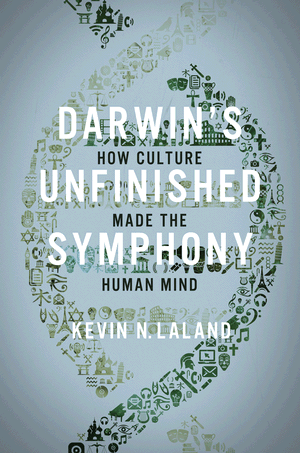 Back in 2012 I wrote a landmark article on common descent in cultural evolution titled cultural common descent. Alas, my article included no references because - as far as I knew at the time - nobody else had seriously considered the idea. Revisiting the idea in 2017, my views have not changed very much. Nor has the situation with other researchers. Maybe my search skills are lacking, but: where is everyone?
Back in 2012 I wrote a landmark article on common descent in cultural evolution titled cultural common descent. Alas, my article included no references because - as far as I knew at the time - nobody else had seriously considered the idea. Revisiting the idea in 2017, my views have not changed very much. Nor has the situation with other researchers. Maybe my search skills are lacking, but: where is everyone?Cultural common descent remains a useful concept which forces researchers on to the horns of a dilemma: either reject or accept common descent for life on earth. All the evidence isn't yet in - but common descent still looks like a pretty useful concept that can be applied to cultural evolution too. What that means is that researchers need to consider the possibility that memes evolved from genes or gene products.
Doesn't the "face on mars" meme disprove cultural common descent? No more than do inheritance of knowledge about gravity, water or rocks from the inorganic environment disprove common descent in the organic realm. Perhaps some will respond that of course, some memes evolved from genes or gene products. However, I think it is fair to say that this possibility is not really on the horizon of many cultural evolution researchers - and it is far-from obvious how widespread memes having purely non-memetic ancestors is in modern times. Maybe - as in the organic realm - established creatures have occupied their niches and eat them and their lunch.
IMO, what we really need at this stage is more researchers to join in. Cultural common descent has been a neglected concept for far too long now. That's rather puzzling because you might think that common descent is a core evolutionary concept and that philosophers of evolution would be eager to get their teeth into the issue. IMO, it is now time to put the concept firmly on the map.
 Laland's recent book on cultural evolution is out. It is titled:
Laland's recent book on cultural evolution is out. It is titled:  A
A  Stuart Russell
Stuart Russell  A new book on cultural evolution is coming out soon:
A new book on cultural evolution is coming out soon:  Thomas C. Scott-Phillips has recently weighed in on the 'cultural attraction' issue. Acerbi Alberto drew my attention to the paper with a
Thomas C. Scott-Phillips has recently weighed in on the 'cultural attraction' issue. Acerbi Alberto drew my attention to the paper with a 








